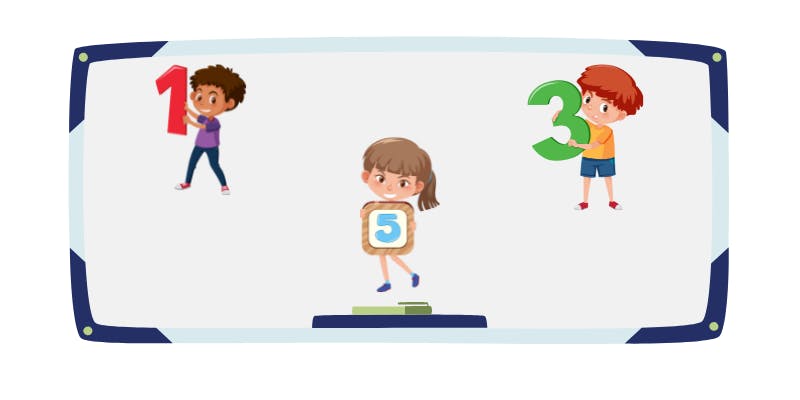Countable Nouns and Their Uses for Elementary & ESL
CCSS alligned CCSS.L.1.1b, CCSS.L.2.1, CCSS.L.2.1bCCSS.L.3.1a, and CCSS.L.4.1.
More content
This short guide can give students an explanation of what countable nouns are in the English language. Teachers or homeschoolers can incorporate some of this overview into their existing materials. It might allow any students who need it to have a useful refresher on which kinds of nouns are countable, why English chooses to count them, and how we use them in sentence structures. Here are some countable noun examples, the difference between countable and uncountable nouns, and how to use them for Elementary and ESL.
How Do We Know Which Nouns Are Countable?
Not all nouns are countable nouns; we need to know the differences because they can affect the kinds of verbs or articles we use, like the, a, or an. A countable noun is a noun that we can number. They can be singular (1) or plural (1+.)
- A or an are both common determiners that you would use with the singular form of a countable noun. You can say or write out; I see a cup on the table because both "cup" and "table" are countable nouns.
- Further examples of this might include sentence structures like; I see three cups stacked on the table, or you could write I see four cups stacked on each of the three tables.
- I've got a toy. She's got two toys.
As you can see, sometimes the determiner does not need to change when you move a countable noun from its singular to its plural form.
Countable Noun Examples For Kids
Here is a short list of different countable nouns. There are many to learn.
Food & Drink
- Apple
- Cake
- Eggs
- Burger
- Pizza
Things
- Table
- Chair
- Cushion
- Blanket
- Book
- Form
Abstract Things
- Accident
- Answer
- Note
- Dollar
- Game
Body Parts
- Finger
- Hand
- Eye
- Head
- Tummy / Stomach
Can We Get Rid of the Article?
In English, articles likes the, a, or an is one of the writing mechanics that can help us identify countable nouns when we see them. Sometimes we keep them in; sometimes, we keep them out.
- You could say that the three dogs in the yard are brown. You are referring to and counting three specific dogs.
- You might want to tell your friend that dogs don’t like to get wet.
- Dog is still countable in English, but if you are referring to a trait of dogs in general, you would then omit the article.
When a countable noun is singular, use words like a, my, or this:
- I want an orange
- She wants this game.
- Where is my bag?
When a countable noun is plural, we can use it by itself:
- I want oranges.
- She likes games.
- Bags can break.
You can also use some or any with countable nouns:
- I've got some oranges.
- She'd like to play some games.
- There aren't any games.
You can also use few or many with a countable noun:
- She's got a few dollars.
- How many games have you got?
- How many chairs do we need?
Do Exceptions Exist for Countable Nouns?
Yes, you might encounter some exceptions for countable nouns in the English language. Often, this is something that will happen when you are dealing with nouns that English takes from other languages. This is because, in some cases, things you cannot count in English end up being things you can count in another language. Here is where the idea of countable and uncountable nouns can get a bit trickier for some students, particularly if you have ESL students who do have some nouns in their own language that we would not count in English. In such cases, the nouns that you would count in the other language need to follow the rules for the uncountable ones in English. Things that we would not count in English typically relate to abstract concepts, but this is not always true.
- We do not count the word toast in English. If we want to get an idea of the amount of toast a person would like, we need to ask them how much toast they prefer. We cannot inquire about how many toasts they would like.
- In some other languages, however, this is precisely the process that the mechanics would follow, and one might say that I prefer three toasts in the morning.
- In English, we may be able to get around this problem by adding to the sentence. We can say; I prefer three pieces of toast in the morning. Now, we are using countable nouns to pluralize pieces and add that information to the amount of toast.
Countable Noun Quiz
Want to test your knowledge? Take this countable noun quiz.
1. Countables noun are always things that you can
Choose the best answer from the choices below
2. Dog, table, and head are countable nouns. True or false?
Choose the best answer from the choices below
3. You can also use some or any with countable nouns. True or false?
Choose the best answer from the choices below
Conclusion
If you think in terms of the number of people, places, or objects you’re describing, you're beginning to understand which nouns you can count. They often have singular and plural forms, and they work well with the determiners we have in the English language. Be on the lookout for exceptions, and don’t forget that there are ways to make some uncountable nouns countable, too. Want to work on reading comprehension with elementary? Check out our reading comprehension worksheets.
